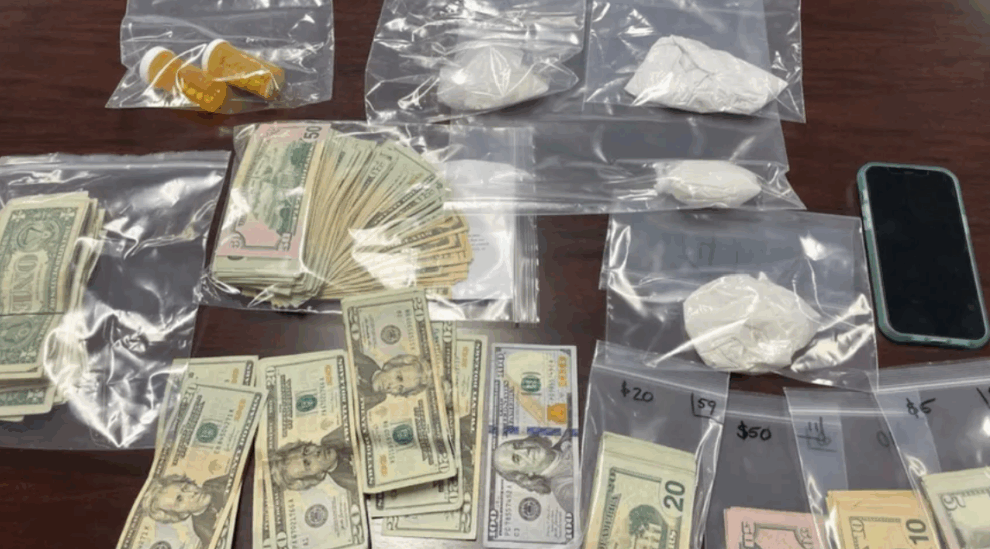Pittsburgh sees fentanyl deaths decline as Trump-era border policies curb smuggling and crime, marking a turning point in the city’s fight against the opioid crisis.
Pittsburgh may be turning the corner in fighting the devastating fentanyl epidemic. The synthetic opioid, many times stronger than heroin, has ravaged communities, fueled homelessness, and overwhelmed emergency services. But recent developments suggest the city may be turning a corner, thanks to a combination of federal border policy changes, local law enforcement efforts, and evolving public health strategies.
A recent report by Broad + Liberty noted a remarkable decline in fentanyl-related overdose deaths in Allegheny County for the first time in years. In 2022, fentanyl contributed to more than 80% of overdose deaths in the county. Now, that rate is finally starting to drop. Former Congresswoman Melissa Hart attributes this change partly to a reduction in fentanyl entering the country. Hart argues the Trump administration’s attitude on crime has contributed to the decline, saying Trump’s DOJ “has targeted crime, not businesspeople”, referring to a number of suits brought against a variety of businesses by the Biden administration.
Although The Washington Post recently published a story speculating about the “mystery” behind reduced fentanyl border crossings, others point to a more direct cause: border enforcement. Likewise, Hart noted that illegal border crossings are reaching new lows under the Trump administration.
A Cowboy State Daily column by Wyoming Sen. Cynthia Lummis celebrated the decline in border smuggling, citing Trump-era policies that prioritized wall construction, Remain in Mexico protocols, and enhanced cooperation with Mexican authorities. These efforts have disrupted key fentanyl trafficking routes, cutting off supply at the source and possibly reducing what reaches American cities like Pittsburgh.
A New Jersey man was taken into custody after state police allegedly intercepted him trafficking more than 100 bricks of fentanyl from Philadelphia to Pittsburgh.https://t.co/BO4A6vngwx
— Altoona Mirror (@AltoonaMirrorPA) June 2, 2025
But Pittsburgh’s recovery isn’t just about federal action—it’s also about local adaptation. One major challenge has been the police staffing crisis. As WESA reported in February, Pittsburgh has faced difficulties recruiting new officers and maintaining the goal of 800 officers. This is after more officers left the department in 2024 than any previous year this decade. This shortage undermines the city’s ability to maintain a presence in troubled areas, respond to drug-related emergencies, and enforce laws against trafficking and open-air use.
The fentanyl crisis has also fueled Pittsburgh’s homelessness problem. A TribLive report detailed the city’s controversial decision to clear out a downtown homeless encampment over escalating drug problems. City officials cited violence, overdoses, and deteriorating conditions as reasons for the move, though the displacement of vulnerable populations raised concerns among advocacy groups. The cleanup highlights the complex intersection of addiction, housing, and law enforcement—where solutions are rarely straightforward.
Yet just a week after the city cleared out the homeless camp, a needle exchange program for addicts was restarted. CBS News Pittsburgh reported on the city’s needle exchange program, a harm-reduction initiative aimed at curbing the spread of disease and providing a lifeline to those in active addiction. While some critics argue such programs enable drug use, proponents emphasize their role in connecting users with treatment, education, and medical services. These programs may not directly reduce fentanyl imports or street supply.
Ultimately, Pittsburgh’s progress appears to be the result of multiple converging factors: decreased fentanyl supply at the national level, local law enforcement stopping homeless camps from becoming drug dens, and a shift in federal law enforcement policy. The city’s experience may prove how a well-rounded approach is key to curbing the fentanyl crisis. As Pittsburgh works to make its public spaces safe and protect its most vulnerable residents, their experience can help other communities facing similar challenges. While the fight against fentanyl is ongoing, it might be entering a new phase after stronger border enforcement from the Trump administration.











